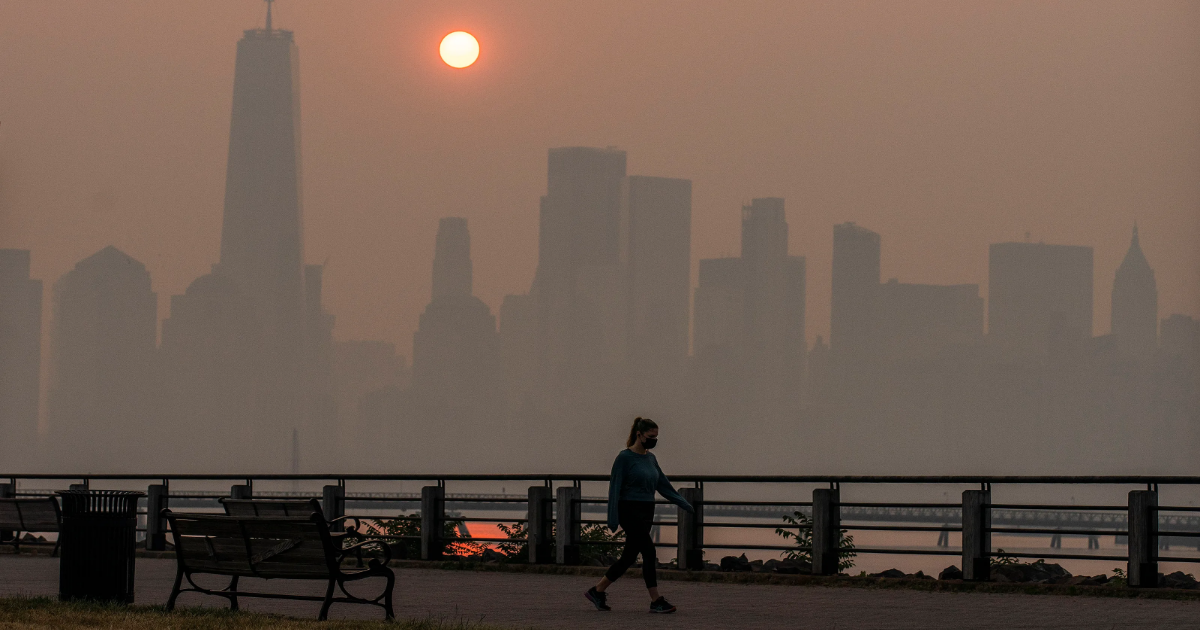
Smog from wildfires sweeping the nation has left tens of millions more Americans to breathe toxic air even as man-made forms of pollution fall, according to a new study released Thursday.
The American Lung Association’s 26th annual State of the Air report found that 25 million more people in the U.S. are breathing air that scores a failing grade in terms of pollutants that can cause premature death, impair cognitive abilities and trigger asthma attacks.
Nearly half of the country lives in areas that received a failing grade for either particle pollution – fine particulate matter created when things burn – or ozone pollution, according to the report. Almost 43 million live in places that failed both pollution measures.
The most heavily polluted places remain on the West Coast, although the Canada wildfires made the air quality for dozens of states in the central and eastern U.S. worse than it has been in years.
“This year’s report shows the dramatic impact that air pollution has on a growing number of people,” said Harold Wimmer, President and CEO of the American Lung Association. “Families across the U.S. are dealing with the health impacts of air pollution every day, and extreme heat and wildfires are making it worse. Air pollution is causing kids to have asthma attacks, making people who work outdoors sick, and leading to low birth weight in babies.”
The study comes as the new administration of President Donald Trump’s administration cuts jobs at the Environmental Protection Agency and sidesteps regulations on oil, gas and coal development.
Study authors relied on air quality data from 2021-2023, the Lung Association said.
Here’s what to know about the worst and the best places in the country for air quality.
Top ten US metro areas for worst air pollution on West Coast
Metro areas on the West Coast that have long been left polluted by roadways, agriculture, oil and gas industries and seemingly endless wildfires, scored the worst on the American Lung Association report.
Bakersfield, Fresno and Visalia – hubs for agricultural production, shipping and warehouses where the population is predominantly Latino – landed in the top five cities for the report’s measures for 24-hour particle pollution, year-round particle pollution and ozone pollution.
Across the U.S., Americans experienced more days of severe short-term particle pollution than in all the years the Lung Association has produced the report.
Spikes in particle pollution are associated with climate events, including wildfires. Hours spent outside on such days can trigger heart attacks, other hospitalizations and even death, according to the Lung Association.
Other metro areas on the list for the most polluted by short-term particles included are: Eugene-Springfield, Oregon; Los Angeles-Long Beach; Sacramento-Roseville; Seattle-Tacoma, Washington; Reno-Carson City, Nevada; and Fairbanks, Alaska.
Two cities score top clean air marks, down from five
Just two cities experienced no high particle pollution days or high ozone days and ranked among the cities for the lowest year-round particle pollution: Bangor, Maine and San Juan, Puerto Rico.
Only two cities scoring top marks across all pollution measures marks a sharp drop from last year when five cities did, the Lung Association said.
Communities with the best year-round air quality included Casper, Wyoming; Anchorage, Alaska; and Honolulu. Except for Honolulu, most of the cities with the best air quality were majority white.
Bad fire season pollutes progress
The primary cause of the worsening air quality for Americans comes as a result of climate events including wildfires, drought and extreme heat, according to the report.
Wildfires burning in Canada in the summer of 2023 blanketed the Upper Midwest and Northeast with smog and high levels of particulate pollution.
Surreal photos of New York City then showed the city glowing under an eerie orange because of the smog.
“Years of successful cleanup of emissions from transportation, energy generation and industrial processes have contributed to falling ozone levels across much of the country,” according to the report. “Unfortunately, as was shown in 2023, one bad fire season has the potential to offset that progress, at least temporarily, creating new challenges for air pollution control efforts and putting the health of the communities affected at increased risk.”
